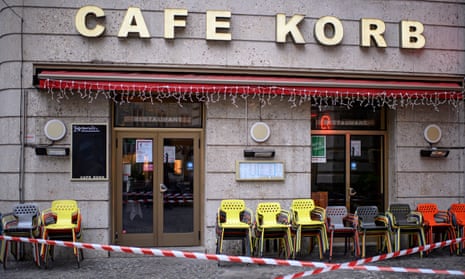In the past few weeks, Austria has hit many new Covid-19 records – none of them good. On 18 November there were 15,145 new cases recorded, the largest number seen since the pandemic began. And the seven-day average for new confirmed cases per 100,000 people is at 1,395, more than double the rates in countries such as Germany, France and the UK.
On Friday the Austrian chancellor, Alexander Schallenberg, announced the country’s fourth national lockdown, beginning today and lasting between 10 and 20 days. This makes Austria only the second European country, after Latvia, to impose lockdown measures since vaccines became widely available earlier this year. Going even further, Schallenberg announced that Austria would also be the first in Europe to bring in compulsory vaccination beginning on 1 February 2022.
Schallenberg and his health minister, Wolfgang Mückstein, had previously said that lockdown measures would return only for the unvaccinated. They hoped this might be enough to bring the vaccination rate up and case numbers down. While the percentage of Austrians in receipt of first doses has crept up to 69%, from below 60% at the beginning of August, once intensive care units in the states of Upper Austria and Salzburg became full, another nationwide lockdown became inevitable. And a vaccine mandate – once an unthinkable option – has been broached.
Public discussion about a vaccine mandate began over the summer. But the former chancellor Sebastian Kurz resisted the idea, preferring to rely on appeals to responsibility and individual choice. By the summer’s end, however, the country seemed to have stalled at “max vax”, and its share of the population fully vaccinated against Covid-19 had fallen behind the EU average.
How a broad vaccine mandate could be enforced remains unclear – though non-compliance could mean a fine of as much as £3,000, cabinet minister Karoline Edtstadler has said – and it may be liable to challenge on constitutional grounds either at the domestic or European level.
Recent opinion polling indicates a slim majority in Austria in support of a vaccine mandate. When asked to choose between a potpourri of possible Covid-19 countermeasures, 41% of Austrians plumped for compulsory vaccination – the most popular measure ahead of a lockdown, nightly curfew and vaccine mandate for particular professions. And 53% of viewers of the news channel Puls24 said they favoured a vaccine mandate, with 44% against.
But while a majority of citizens may actually support a mandate, Austrian society is deeply divided between those who have accepted vaccination measures thus far, and a hardened, unvaccinated residuum caught up in conspiracy theories and false information, and attracted to far-right politics.
On Saturday, demonstrations in Vienna against the new lockdown and mandate announcements attracted 40,000 people, according to police estimates. Convicted neo-Nazi Gottfried Küssel and identitarian leader Martin Sellner were among those taking part. Several demonstrators wore yellow Stars of David or carried placards that compared the mandate to the Holocaust.
Austria’s low vaccination rate and lashings of anti-vax and Covid-sceptic sentiment are reflected in its party politics. Austria has not one but two openly Covid-sceptic parties: the Freedom party (FPÖ) and a new movement, the People-Freedom-Fundamental Rights (MFG) party, which won representation in the Upper Austrian state parliament in regional elections in September. The FPÖ leader Herbert Kickl – prone to throwing about terms such as “vaccine apartheid” and “two-class society” – has promoted the horse deworming drug ivermectin as a treatment. Kickl makes a point of his unvaccinated status, and last week revealed that he had tested positive for Covid-19.
But there are also particular political, geographical and cultural differences that account for Austria’s relatively low rate of Covid-19 vaccination. The government encouraged but never at any point attempted to force the hand of the unvaccinated. This was particularly evident during the September elections in Upper Austria, where the unvaccinated formed a large pool of potential voters and a vaccine mandate was perceived to be a vote-losing issue, a hill on which no party wished to die.
There are particularly low rates of jab uptake in more isolated and disconnected rural areas and less affluent, outer districts of Vienna in which the proportion of residents born outside Austria is larger. It is also worth noting that Austrians use alternative medicines, from homeopathy to home remedies, much more than in Britain. The health minister, for one, is a GP and a qualified practitioner of traditional Chinese medicine. Though Austria’s public insurance-based system produces better health outcomes than the NHS, it is not revered in the same way.
Austria has been a harbinger of European Covid-19 policy before. On 8 November, in a vain attempt to bring the case numbers under control, it introduced a so-called “2G” rule at venues such as restaurants, cinemas and gyms, meaning only those who had been double-jabbed or had recovered from Covid-19 in the previous six months could enter. Where Austria led, others followed, including many German states. Nations that continue to struggle with outbreaks and stubbornly low vaccination rates will be watching Austria’s vaccine mandate rollout closely, possibly as a roadmap of things to come.
Liam Hoare is Europe editor for Moment magazine and author of the Vienna Briefing newsletter
This article was amended on 23 November 2021. Due to an editing error, the infection rate in Austria was understated by a factor of 10.
